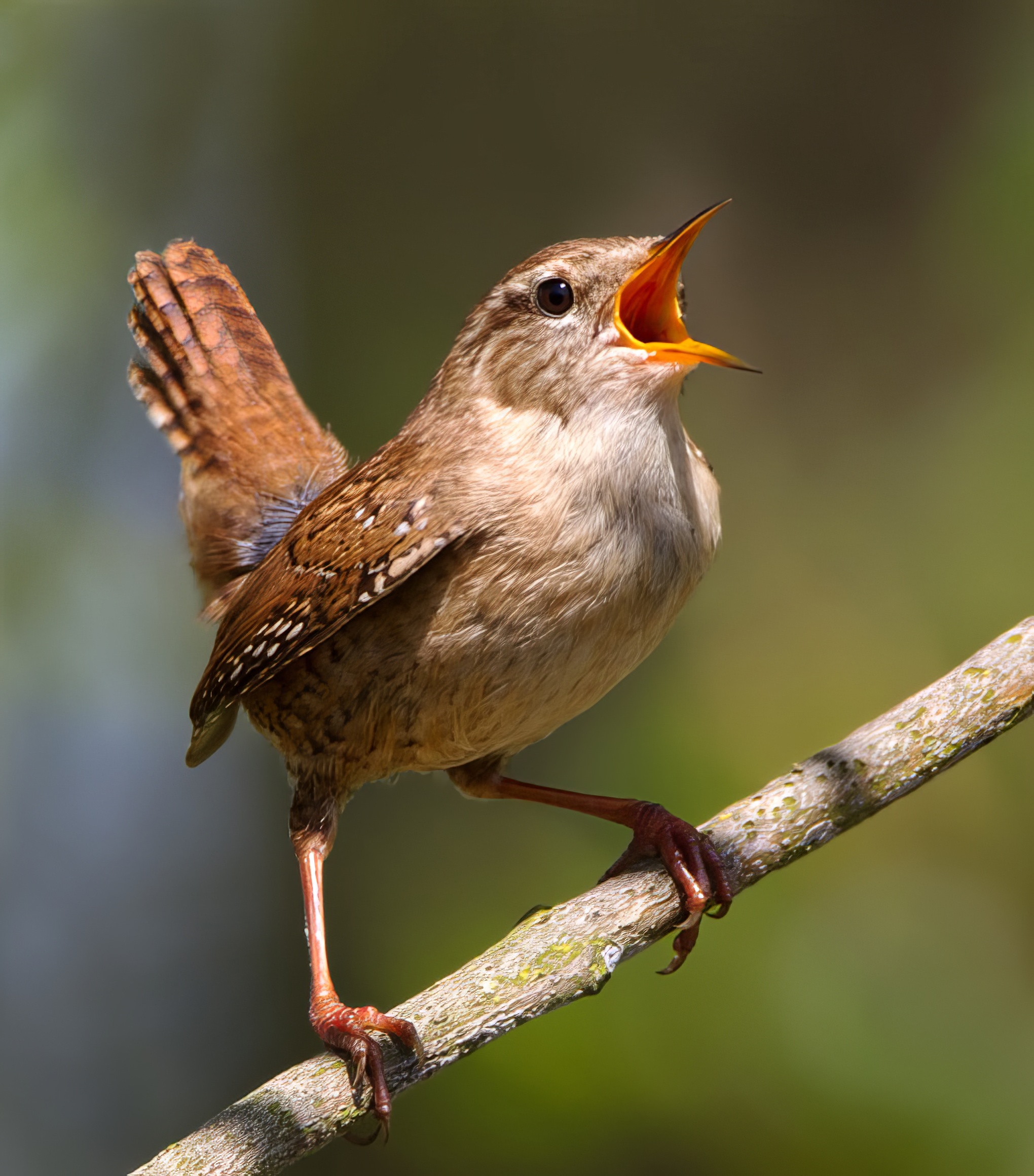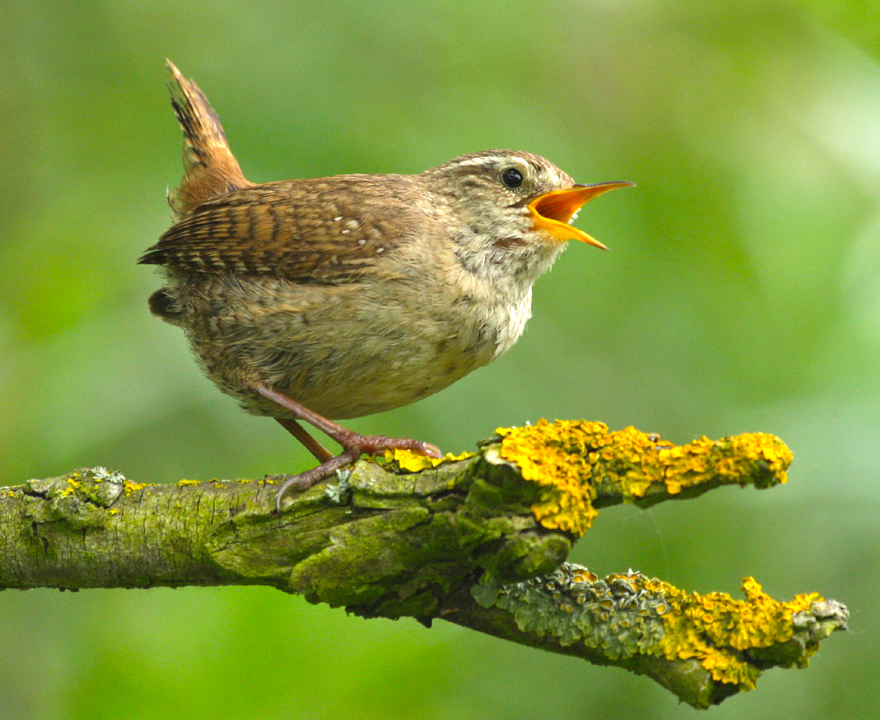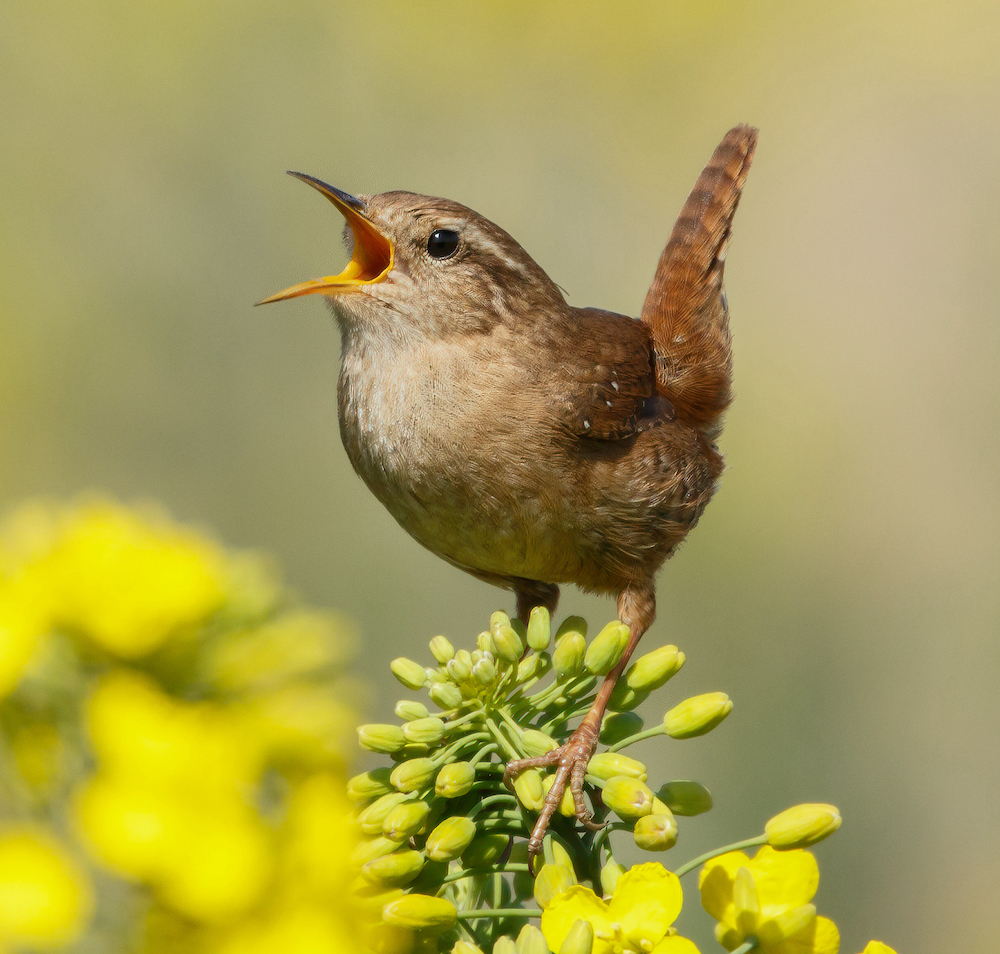Wren Troglodytes troglodytes
Abundant resident and partial migrant.



Wrens: left, KirkbyGP April 30th 2002 (Russ Telfer); centre, Whaplode June 2009 (Neil Smith); right, North Somercotes April 7th 2020 (Mark Johnson).
One of our top three commonest birds and perhaps now the most abundant. The LBC Atlas estimated a population of 200,000 pairs in the late 1980s. BBS data shows that the population has significantly increased by 39% during the period 1994-2018. Like other small passerines, Wrens are susceptible to hard winters and the last really bad ones were in 2009 and 2010, when the BBS chart for Lincolnshire shows a large population set back. More recently the 'Beast from the East' in March 2018 had a negative impact too, but little Jenny Wren is nothing but fecund and usually bounces back.
Some Wren populations are partial migrants, although there is just a single recovery abroad of a Wren ringed in the county - 7T5337 was ringed at Gibraltar Point June 27th 1992 and retrapped in The Netherlands December 1st 1993. Other UK-ringed birds have been retrapped in Belgium, Channel Islands, Sweden and The Netherlands, and a remarkable recovery of a 1CY bird ringed in Russia September 18th 1996 and found dead in Sussex March 6th 1997.
(Account as per new Birds of Lincolnshire (2021), included December 2022)
